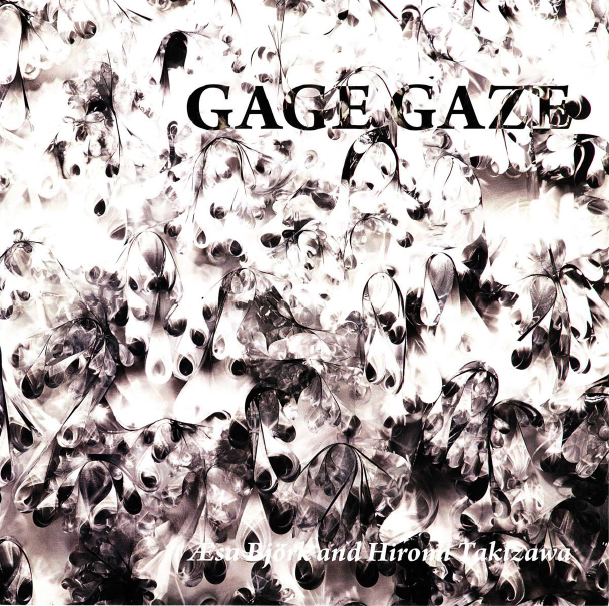Gage Gaze catalog essay by Mary Drach McInnes
- November 25, 2013
- Articles
GAGE GAZE, the joint exhibition by artists, Æsa Björk and Hiromi Takizawa, was an inquiry into material and matter. In it, glass acts as both an anchor and a point of departure for their new work. For several weeks, the gallery became a laboratory for site-specific projects and for documenting recent experimentations beyond the realm of glass. Much of the work was in glass in the form of hot-sculpted spheres, flame-worked circles, and arc-shaped lines. Some pieces, however, were in new or unconventional media for these artists, including cut Mylar and blown bubbles, digital prints and projected video. Throughout, Bjðrk and Takizawa exhibited a light touch.
Æsa Björk uses the body as both the subject and content of her work. Her First Impression From the Measuring Device for Negative Space is composed of a series of thin, wobbly-edged glass rings suspended vertically in space. The transparent rings suggest fragility, a lack of materiality. Almost perversely, the coiled lines of the shadow cast by the work have more presence than the actual object.
Yet First Impression evokes a great deal. Björk’s subject here is the measurement of the human body-and through it, she eludes to a substantial and underrepresented chapter in modern history. Her material of choice, colorless Borosilicate glass, is closely associated with laboratory glass and suggestive of scientific inquiry. Björk’s labored project-the deliberate measurement of her own body at regular mathematical intervals using a graphing device, the painstaking rendering of these individual circumferences in flame-worked glass, the careful re-creation of flesh into glass body-recalls the anthropometric data of the nineteenth century that mapped the body. The artist summons up in a transparent, almost ghostlike form, the Victorian fascination and obsession for classification that demanded the capturing and dominating of the human form. Björk’s linear sectioning of her body recalls the vast archive of colonial subjects minutely documented in anthropological field notes, in hand and footprints, in frontal and profile photographs.
While Björk’s work deals with the mapping and measurement of the body, Takizawa’s pieces embody vision itself . Her lt Comes in Waves is an installation composed of a twelve-foot screen of magnifying lenses suspended from the ceiling and hovering over the wall. Facing this display is an expansive blue neon line that mimics a child’s drawing of a seagull. The neon casts a series of curved “V” patterns-upright and upside down-that ripple across the lens surfaces forming an endless series of waves. The discs gently sway in the gallery and this undulation magnifies the tidal effect. It Comes in Waves suggests the harbors and inlets along the California coastline where Takizawa resides.
The image that lingers with me is Takizawa’s deceptively simple work entitled Flow of Light. This circular video projection is a slightly blurred and mesmerizing image of water streaming over rocks in a creek bed. The title captures its essence; Flow of Light offers us the flickering of light across the stone and liquid surfaces. This elementary, moving image conjures up a magical place. It is here that the artist lets go of the material of glass and yet embraces the core of its being-its light, reflection, and animation.
Gage Gaze was a radiant investigation of vision and materiality.
– Mary Drach Mclnnes, Professor Art History, School of Art and Design, NYSCC Alfred University

